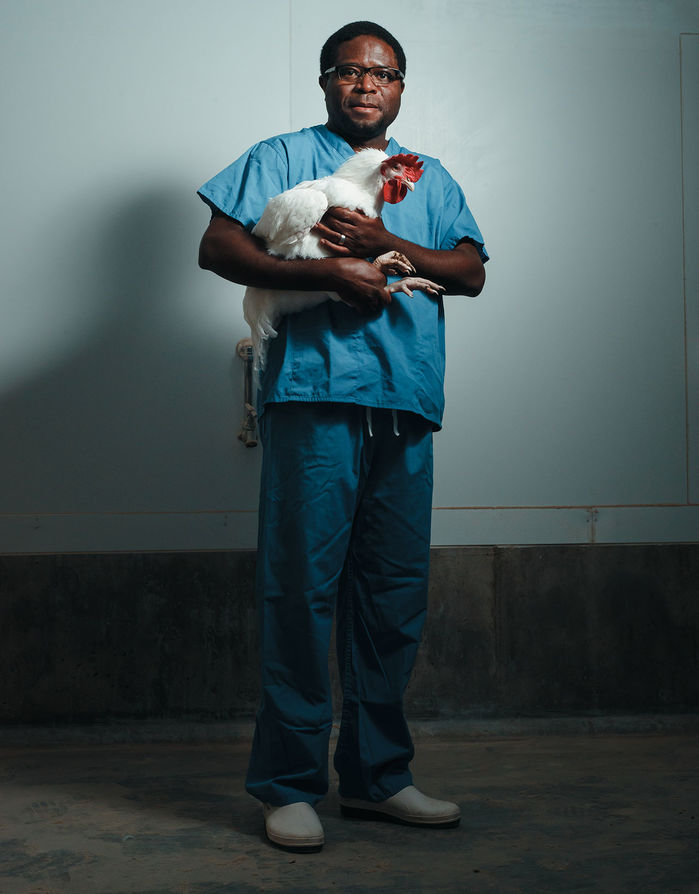 Professor Appolinaire Djikeng uses genetic techniques to identify livestock with useful traits. Photo: CALLUM BENNETTS.
Professor Appolinaire Djikeng uses genetic techniques to identify livestock with useful traits. Photo: CALLUM BENNETTS.
The Centre for Tropical Livestock Genetics and Health based in Edinburgh and Nairobi has come up with a new technology to help farmers in developing countries grow hardier and more productive animals using modern gene-editing techniques.
The technique will enable researchers to make tiny changes to DNA that mimic traditional breeding, but faster, and they can help identify which animals might be best for breeding.
“Raising livestock is a vital source of income in developing countries, however, the developing nations lack sophisticated breeding programs, so their cows and chickens do not make as much milk, eggs, or meat as their counterparts in advanced economies,” said Professor Appolinaire Djikeng, head of the centre.
This makes most farmers in the countries have just a few animals which they risk losing all or most of their livelihood if a disease wipes out their livestock.
RELATED CONTENT: Scientist finds solution to deadly banana disease through genetic orientation
The centre which is an alliance between the Edinburgh University, Scotland’s Rural College and the Africa-based International Livestock Research Institute works with scientists and policymakers in developing countries to use gene-editing techniques to produce animals with desired characteristics.
This technology has the potential to speed up the selective breeding process, such that gains that have been made in the West over several decades could potentially be achieved within 10 years.
RELATED CONTENT: Uganda livestock researchers using genetic materials from Kenya to develop ant tick vaccine
It is a very personal mission for Professor Djikeng, who originates from Cameroon. He spent more than 10 years forging a successful scientific career in the US before being drawn back to Africa and now to this role according to the University of Edinburgh.
“I wanted to move away from blue sky research and work on something that will have a direct impact on improving human health and agriculture in Africa," he says.
“I feel fortunate to be in this role, not least because Edinburgh is one of the best universities in the world, but because there is a long history of mobilizing UK scientific excellence for international development.”
RELATED CONTENT: Baobab among first orphaned crops to undergo genetic mapping
How to use genetic tools to improve livestock
This is done by focusing on a number of traits in livestock which could be fast growth, resistance to disease, and productivity such as in milk production, egg production and quality of the meat.
“For less complex traits, you can identify a single gene or a single variation in DNA that confers that trait. But for other traits, it’s going to be less obvious. It could be an association, a combination of many, many genes, or a very large genomic region. If we get a single gene or a single variant which is linked to an important trait, then you can do genome editing,” explained Djikeng.
“But in cases where it is a group of genes that are conferring that trait, you’re limited. You cannot do genome editing. What you’re left to do is to select animals that have that genomic region and enter conventional breeding.”
RELATED CONTENT: Own feed assures livestock farmers high production
Scientists from the centre also work closely with the farmers to help identify animal that is very suitable for breeding. The animal’s genetic profile is done to make it easily identifiable. The genetic profile not only done visually, but also based on the genome and the genetic profile.
















Comments powered by CComment